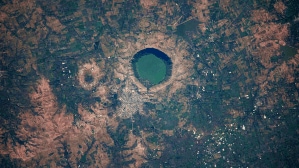Bureaucratese in ancient India
India’s first script, the Indus script, was essentially an administrative device for record-keeping. It had meanings but no ‘sounds’. It wasn’t a ‘language’

The Indus script, the first script of India created by the builders of the Indus civilisation, was ‘discovered’ in 1919. It has remained a ‘millennium’ problem ever since it was thought to be insoluble on account of the absence of bilinguals. However, a study of the material that constitutes the script, could possibly lead to a solution. In any case, even bilinguals do not offer an easy solution, because of problems like the lack of collateral translation, commonality of topics and knowledge of languages.
The Indus script has 576-plus signs and there are in all 2906-plus texts. These consist mostly of passages of 1-10 signs, besides one or two longer ones. The texts are engraved on steatite stone pieces which, in their latest form, were used as seals. Some texts were also found imprinted on wet lumps of clay. In the earliest stage, the texts engraved on small stone-strips were not meant for imprinting. But after some evolution, they came to be engraved on slightly larger pieces, which were rectangular, circular or square in shape. The square form belongs to the mature stage of the civilisation, and the writing here is also bolder and clearer. The system, from its earliest to the later levels, consists of the same clearly thought-out signs. No evolution can be noticed in it, which suggests that it is a script.
In trying to decipher it, the research strategy consisted of establishing a historical-cultural context. The identity of builders, as also their material culture in the Rigveda, was established. They were identified as the Auras and their allies. Their language was identified as Akkadian — which is the earliest known semitic language of Iraq. Sanskrit originated from this language.
In order to give a time frame to the script, the stratigraphy of the seals and signs was worked out. The signs used in different strata varied and all of them were not used all the time. Constant additions and omissions were clearly taking place. This phenomenon can be inferred in other contemporary scripts outside India too.
The short length of the messages, the constancy of the signs and the appearance of single signs, spoke of the Indus script’s logographic or word-script typology. This meant that every sign stood for a complete word, the word itself being unknown. In the random sample from Harappa and Mohenjo-daro, 137 signs appear singly. From the stratigraphy, 1641 basic signs were isolated.
As the script is a word script, no readings emerge. The script signs have extra-lingual referents, which point to meaning and not sound. Also, interestingly, there is total lack of signs referring to grammatical elements like prefixes, suffixes, indicators of gender, number or case. Had these been there, they would have been conspicuous by their repetition. Clearly, then, the script is not language orientated. The texts formed by this script represent lists of things stored and received. Material (revenue?) given as rations, or gifts to the monarch, and so on. An early form of book-keeping, if you like.
Some of the constant signs referred to include a hammer-headed shark signifying a species of fish, wheat, and storage. Placed together they could denote fish, wheat (cobs/heads) received (in storage). Sometimes the sign for wheat is accompanied by another denoting a hand with five fingers. Which could be translated as wheat having been handed over. On account of our limitations of logography, the details of longer texts are incomplete and therefore not very clear. The short texts are clearer, since they can be treated as lists and their meanings are not very intricate.
It must be remembered that the concept of writing a language had not yet materialised at this point of time in human civilisation, but the administrative necessity of keeping a record of transactions was certainly felt. The script was a response to that requirement.
The writer is honorary director of the Rangadatta Vadekar Centre for Study of Indian Tradition, Pune. She has been working on the Indus script since 1999



- 01
- 02
- 03
- 04
- 05




























